| Recent Featured Videos and Articles | Eastern “Orthodoxy” Refuted | How To Avoid Sin | The Antichrist Identified! | What Fake Christians Get Wrong About Ephesians | Why So Many Can't Believe | “Magicians” Prove A Spiritual World Exists | Amazing Evidence For God | News Links |
| Vatican II “Catholic” Church Exposed | Steps To Convert | Outside The Church There Is No Salvation | E-Exchanges | The Holy Rosary | Padre Pio | Traditional Catholic Issues And Groups | Help Save Souls: Donate |  |
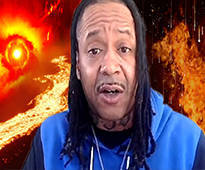
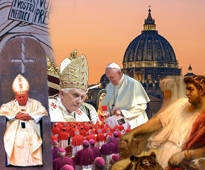
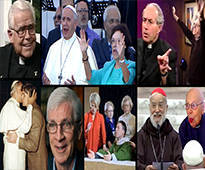
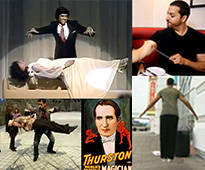
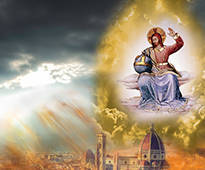

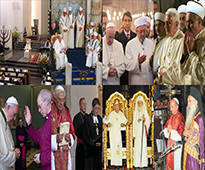


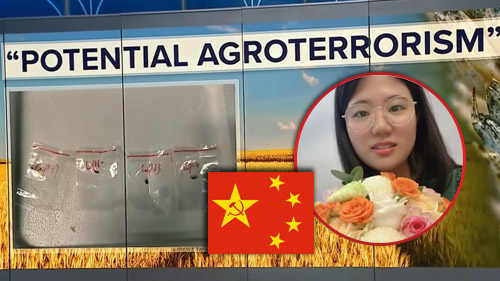 " />
" /> " />
" /> " />
" />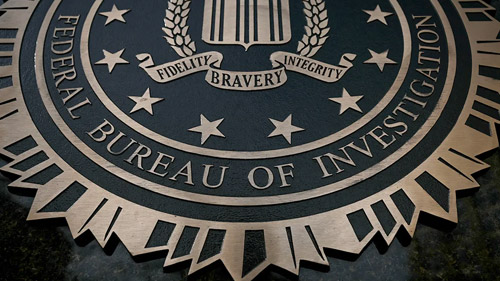 " />
" />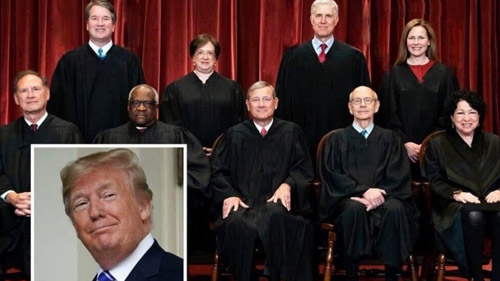 " />
" />




The Glossary of Terms and Principles
The Glossary of Terms and Principles [PDF]
-This glossary of terms and principles will hopefully provide a quick aid to those unfamiliar with some of the phrases, topics or principles that are frequently discussed in this book. Since we feel it is more beneficial, this glossary has been arranged topically rather than alphabetically.-
Papacy – the office of a pope, the successor of St. Peter, which was founded by Jesus Christ (Mt. 16:18-20; John 21:15-17) upon St. Peter as head of the Christian Church. The bishops of Rome are the successors of St. Peter. They hold the same primacy in the Christian Church that St. Peter held in the apostolic Church.
Magisterium – the teaching authority of the Catholic Church, exercised by a pope when proclaiming a dogma with the authority of the Papacy. Not every pronouncement of a true pope is a teaching of the Magisterium. A pope speaks magisterially when he meets certain conditions (as defined by Vatican I). Those who are faithful to the Magisterium are those who are faithful to what all the popes throughout history have dogmatically taught or set forth as what the Catholic Church has always held.
Ex Cathedra – Latin for “from the Chair.” This refers to when a pope speaks infallibly from the Chair of St. Peter when he has fulfilled the conditions for an infallible pronouncement. It is heresy and mortal sin to deny an ex cathedra pronouncement of a pope, which is irreformable (unchangeable), since it constitutes the dogma that Christ revealed to the Church.
Divine Revelation/Dogma – Jesus Christ’s truth is the teaching of Divine Revelation. The Catholic Church teaches that the two sources of Divine Revelation are Sacred Scripture and Sacred Tradition; their true content is set forth by the Magisterium of the Catholic Church. Divine Revelation ended with the death of the last apostle. Dogma is unchangeable. When a pope defines a dogma, he doesn’t make a dogma true from that point forward, but rather solemnly declares without erring that which has always been true since the death of the last apostle. Dogmas are to be believed as the Church has “once declared them,” without any recession from that meaning to a “deeper understanding.”
Heretic – a baptized person who rejects a dogma of the Catholic Church. Heretics are automatically excommunicated from the Church (ipso facto) without any declaration for rejecting an authoritative teaching of the Faith.
Schismatic – a baptized person who refuses communion with a true pope or with true Catholics. Schismatics are almost always also heretics. Schismatics also incur automatic excommunication.
Apostate – a baptized person who doesn’t merely deny one or more truths of the Catholic Faith, but gives up the Christian Faith altogether. Apostates also incur automatic excommunication.
Antipope – a false claimant to be the pope (i.e. a false claimant to be the Bishop of Rome). There have been over 40 antipopes in Church history, including some who reigned in Rome. This book proves that the Vatican II revolution was brought in by men who are and were antipopes falsely posing as true popes.
Sedevacante; sedevacantist position – Sede is Latin for “chair” and Vacante is Latin for “empty.” A sedevacante period is a period when there is no pope: the Chair of St. Peter is empty. This usually occurs after the death of a pope or after a pope’s resignation; this has occurred over 200 times in Church history, and has lasted for years at times. The doctors of the Church also teach that the Chair of Peter would become vacant if a pope were to become a manifest heretic. The sedevacantist position describes the position of traditional Catholics who hold that the Chair of St. Peter is presently vacant because the man in Rome can be proven to be a public heretic, and therefore not a true pope.
Vatican II – a council which took place from 1962-1965. Vatican II purported to be a general council of the Catholic Church, but actually was a revolutionary “robber council” which taught doctrines condemned by the Catholic Church. Vatican II brought in a new religion, and was responsible for the incredibly rotten fruits and revolutionary changes that ensued in its aftermath.
Vatican II Sect – this phrase describes the counterfeit Church that has arisen since Vatican II, which was prophesied in Catholic prophecy and Sacred Scripture. This counterfeit sect is rife with heresy, apostasy and the most outrageous scandals, as this book proves in tremendous detail. This book proves that the Vatican II sect is not the Catholic Church, but the Devil’s counterfeit to lead people astray during the Great Apostasy.
Novus Ordo Missae – Latin for New Order of the Mass; it refers to the New Mass promulgated by Paul VI on April 3, 1969.
Novus Ordo Church – as it is referred to in this book, is basically synonymous with the term “Vatican II sect,” which describes the counterfeit Church of Vatican II, the New Mass and those who adhere to it.
Traditional Catholic – a person who is simply a Catholic who adheres to the Catholic Faith of all times, who adheres to all the dogmas proclaimed by popes, and the traditional rites of the Church. A traditional Catholic doesn’t accept the false Vatican II religion or the New Mass (the Novus Ordo) because they are novelties opposed to Catholic teaching.
False Traditionalist – a person who adheres to the traditional Catholic Faith in certain ways (such as in the resistance to ecumenism or parts of Vatican II), but also holds some allegiance to the false Vatican II sect. The allegiance of “false traditionalists” to the Vatican II sect is usually because they accept the post-Vatican II “popes” as true popes when the post-Vatican II “popes” can be proven to be antipopes (as shown in this book).
Ecumenism – this refers to the teaching of Vatican II and the “popes” after Vatican II to respect, unite with, pray with, and esteem false religions. “Ecumenism,” as practiced and taught by the Vatican II sect, is directly condemned by Catholic teaching, the popes and the whole tradition of the Church. It puts the true religion on a par with false religions, and the true God on a par with false gods. The Ecumenism of the Vatican II sect is exposed in tremendous detail in this book. Some say that, strictly speaking, Ecumenism refers to the heretical practice to unite with Protestant and schismatic sects, while interreligious dialogue refers to the same practice with non-Christian religions. But the two terms are basically synonymous today.
CATHOLIC CONCEPTS CONCERNING NON-CATHOLIC RELIGIONS
Non-Catholic religions are false/There is no Salvation Outside the Catholic Church – The Catholic Church teaches as a dogma that there is only one true religion and one true God. The Church teaches that all non-Catholic religions are false and belong to the Devil. It is a dogma of the Catholic Faith that Outside the Catholic Church There is No Salvation (extra ecclesiam nulla salus). This has been defined seven times by popes speaking ex cathedra.
Paganism/the worship of other gods – The term paganism refers to the false, polytheistic religions, such as Buddhism, Hinduism, etc. The Catholic Church teaches that the gods worshipped by members of pagan religions (who worship various gods) are demons.
Islam – a false religion revealed by the false prophet Muhammad. Its followers are called Muslims, who follow the book called The Koran. Muslims reject the Trinity and the Divinity of Christ. According to Catholic teaching, Islam is an abomination and a diabolical sect (i.e. a sect of the Devil). Muslims are unbelievers (infidels) who need to be converted for salvation.
The Vatican II sect heaps praise on Islam and considers it a good religion.
Judaism – the religion which rejects Jesus Christ as the Messiah and attempts to practice the Old Law given through the mediation of Moses. Judaism holds that the Messiah is still to come for the first time. The Catholic Church teaches that the Old Law was revoked with the coming of Christ, that it is a mortal sin to continue to observe it (Council of Florence), and that the adherents of the Jewish religion will not be saved unless they convert to Jesus Christ and the Catholic Faith.
Orthodoxy/Eastern Orthodox – the followers of the schism from the Catholic Church that occurred in the year 1054. The “Orthodox” reject the dogma of the Papacy, Papal Infallibility and the last 13 dogmatic councils of the Church. They also allow divorce and remarriage. They are considered heretics and schismatics in Catholic teaching. They need to be converted for unity and salvation.
However, the Vatican II sect says “the Orthodox” don’t need to be converted for salvation. It teaches that they are part of the true Church and on the road to salvation (as proven in this book).
Protestants – the followers of the sects which split from the Catholic Church after Martin Luther’s revolt in 1517. Protestants are those who reject Catholic dogma in one or more areas. One who rejects or protests against any Catholic dogma is a heretic and ipso facto excommunicated. Protestants usually reject Catholic dogma in the areas of the priesthood, the Mass, the sacraments, the Papacy, the necessity of faith and works, the intercession of the saints, etc.
The Vatican II sect, however, holds that Protestantism is not heresy, that Protestants are not heretics, that their sects are means of salvation and part of the true Church.
OTHER IMPORTANT CATHOLIC CONCEPTS USED THROUGHOUT THE BOOK
Catholics cannot partake in non-Catholic worship – Prior to Vatican II, all Catholic moral theology manuals reiterated the traditional teaching of the Church that it is a mortal sin against the divine law to partake in non-Catholic worship. After Vatican II, this mortally sinful activity is officially encouraged (e.g., see The Vatican II sect vs. the Catholic Church on partaking in non-Catholic worship section of this book).
Heresy can be manifested by deed – While some people manifest their heresy by written statements or oral declarations, most heresy and apostasy is manifested by deed, not word. People manifest their heresy and apostasy by going to non-Catholic temples to worship, such as the synagogue or the mosque, or by joining the Protestants and schismatics in their worship at their churches.
That’s why St. Thomas Aquinas taught that if anyone were to worship at the tomb of Mohammed, he would be an apostate. Such an action alone would show that he does not have the Catholic Faith, and that he accepts the false Islamic religion.
We see here that heresy against the dogma of the Immaculate Conception can be signified by word, writing and “other external means.” In fact, in his book Principles of Catholic Theology, Benedict XVI admitted that the actions and gestures of ecumenism, which the post-Vatican II sect has made toward the Eastern schismatics, signify precisely that (according to the Vatican II sect) the schismatics don’t need to accept the Papal Primacy:
This will be discussed more in the book, but this is an astounding admission by the current leader of the Vatican II sect that the actions of ecumenism signify heresy against the Papal Primacy. This is a clear example of heresy manifested by deed.
The Catholic Church rejects all who have opposing views – Those who reject the Catholic Church’s dogmatic teaching are condemned, anathematized and rejected by the Church.
To reject one dogma of the Catholic Church is to reject all Faith, since Christ is the guarantor of its dogmas
Catholics do not hold communion with heretics – All who reject the Faith of the Catholic Church are outside of and alien to her communion; true Catholics must hold no communion with them.
Clerics, including bishops and popes, must be resisted if they stray from the Faith; they lose their offices automatically if they become public heretics
What is a public defection from the Faith?
Indefectibility – refers to the promise of Christ that He would always be with His Church (Mt. 28) and that the gates of Hell cannot prevail against the Church (Mt. 16). Indefectibility means that the Catholic Church will, until the end of time, remain essentially what she is. The indefectibility of the Church requires that at least a remnant of the Church will exist until the end of the world, that the official teachings of the Church will not err, and that a true pope will never authoritatively teach error to the entire Church. It does not exclude antipopes posing as popes or a counterfeit sect that reduces the adherents of the true Catholic Church to a remnant in the last days, which is precisely what is predicted to occur in the last days and what happened during the Arian crisis.
1 Denzinger, The Sources of Catholic Dogma, B. Herder Book. Co., Thirtieth Edition, 1957, no. 1839.
2 Denzinger 1800.
3 Denzinger 1818.
4 The Papal Encyclicals, by Claudia Carlen, Raleigh: The Pierian Press, 1990,Vol. 2 (1878-1903), Vol. 2 (1878-1903), p. 393.
5 The Papal Encyclicals, Vol. 3 (1903-1939), p. 125.
6 The Papal Encyclicals, Vol. 1 (1740-1878), p. 230.
7 Denzinger 714.
8 The Papal Encyclicals, Vol. 3 (1903-1939), p. 381.
9 Decrees of the Ecumenical Councils, Sheed & Ward and Georgetown University Press, 1990, Vol. 1, p. 479.
10 Von Pastor, History of the Popes, II, 346; quoted by Warren H. Carroll, A History of Christendom, Vol. 3 (The Glory of Christendom), Front Royal, VA: Christendom Press, p. 571.
11 Denzinger 712.
12 The Papal Encyclicals, Vol. 1 (1740-1878), pp. 41-42.
13 The Papal Encyclicals, Vol. 1 (1740-1878), p. 57.
14 The Papal Encyclicals, Vol. 3 (1903-1939), p. 242.
15 The Papal Encyclicals, Vol. 1 (1740-1878), p. 201.
16 The Papal Encyclicals, Vol. 3 (1903-1939), p. 317.
17 St. Thomas Aquinas, Summa Theologica, Pt. I-II, Q. 103., A. 4.
18 St. Thomas Aquinas, Summa Theologica, Pt. II, Q. 12, A. 1, Obj. 2.
19 Denzinger 1641.
20 Benedict XVI, Principles of Catholic Theology, San Francisco: Ignatius Press, 1982, p. 198.
21 Denzinger 246.
22 Denzinger 705.
23 The Papal Encyclicals, Vol. 2 (1878-1903), p. 394.
24 The Papal Encyclicals, Vol. 2 (1878-1903), p. 393.
25 The Papal Encyclicals, Vol. 2 (1878-1903), p. 393.
26 Quoted in Sacerdotium, # 2, Instauratio Catholica, Madison Heights, WI, p. 64.
27 The 1917 Pio-Benedictine Code of Canon Law, translated by Dr. Edward Von Peters, Ignatius Press, 2001, p.
28 The Papal Encyclicals, Vol. 2 (1878-1903), p. 401.
29 The 1917 Pio-Benedictine Code of Canon Law, translated by Dr. Edward Von Peters, p. 695.
30 Dom Prosper Guéranger, The Liturgical Year, Loreto Publications, 2000, Vol. 4, p. 379.
31 Quoted by St. Robert Bellarmine, De Romano Pontifice, II, 30.
32 St. Francis De Sales, The Catholic Controversy, Rockford, IL: Tan Books, 1989, pp. 305-306.
33 St. Robert Bellarmine, De Romano Pontifice, II, 30.
Sign up for our free e-mail list to see future vaticancatholic.com videos and articles.
Recent Content
^